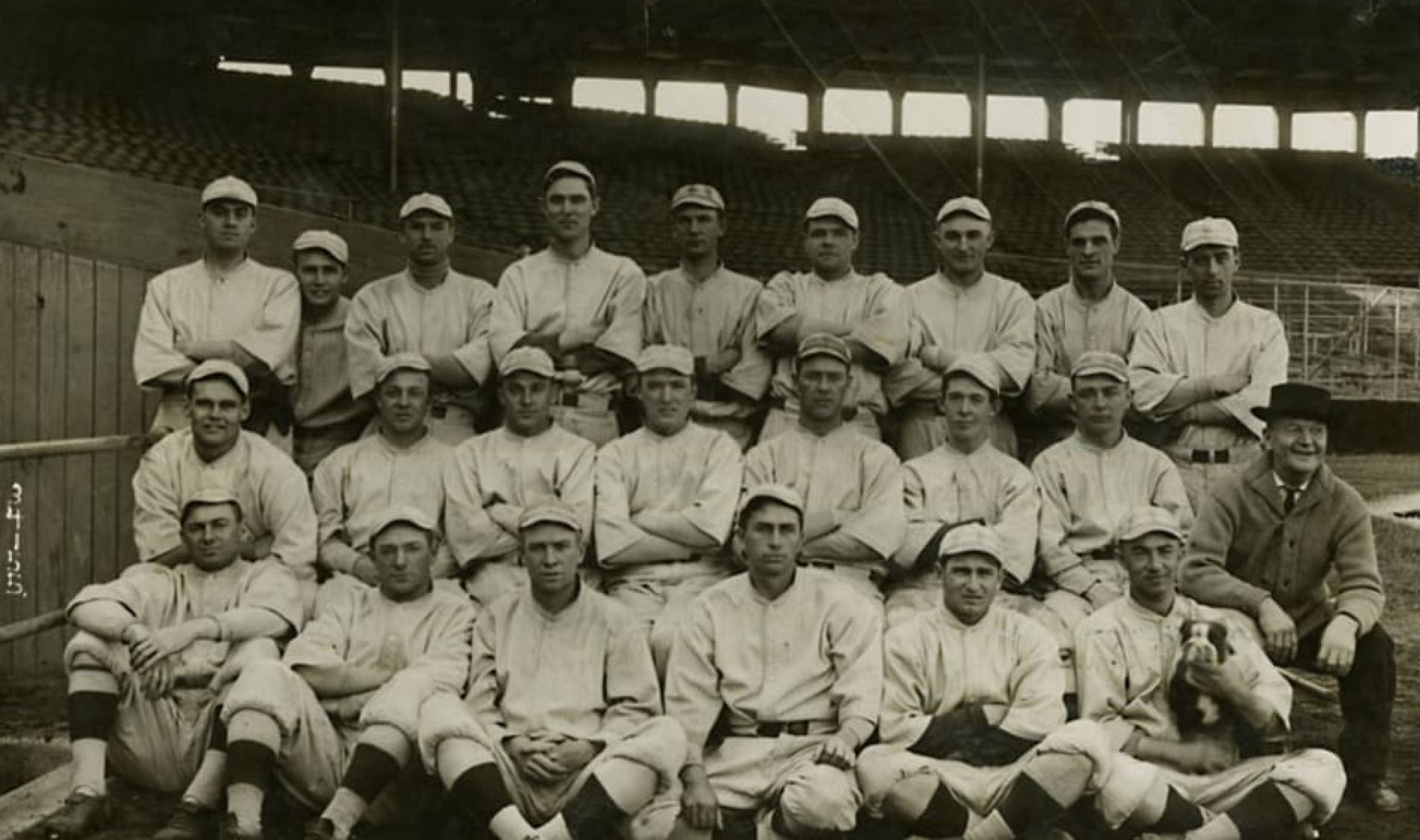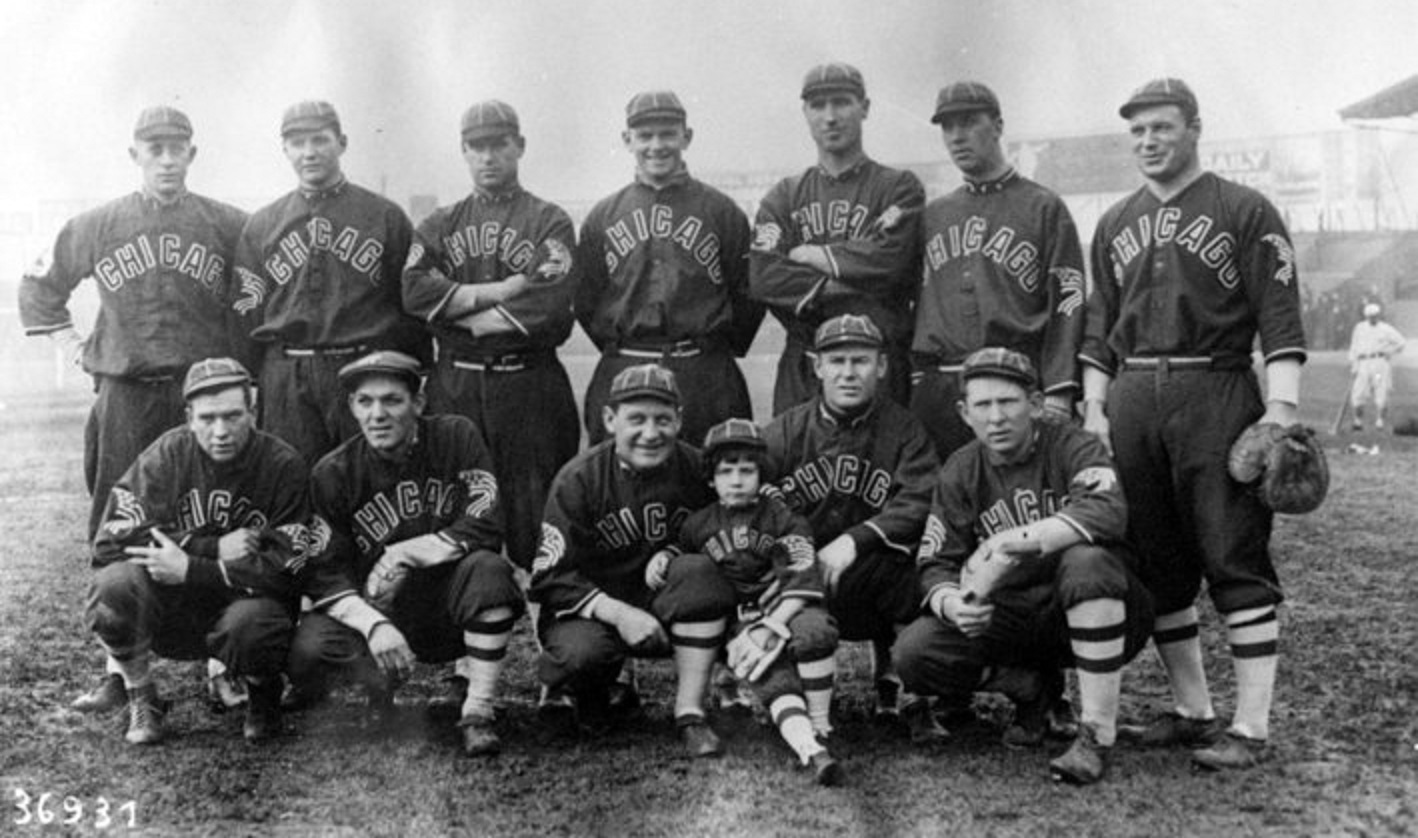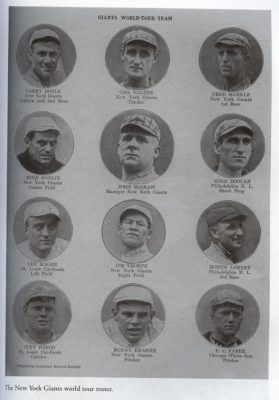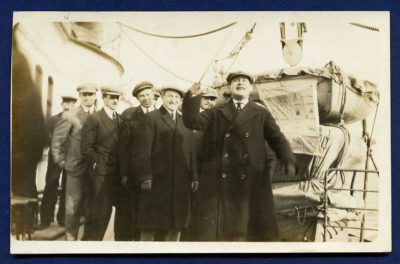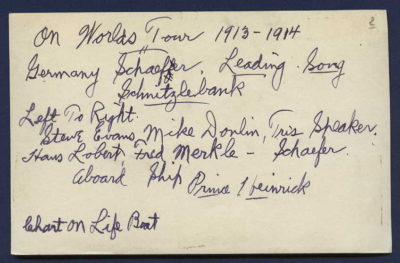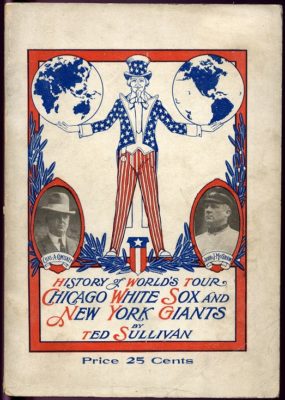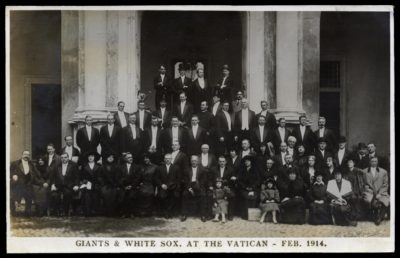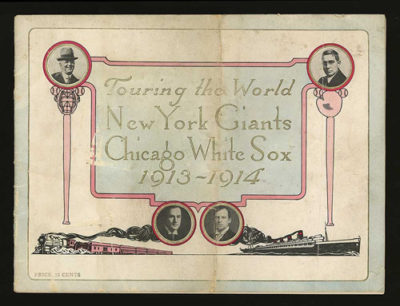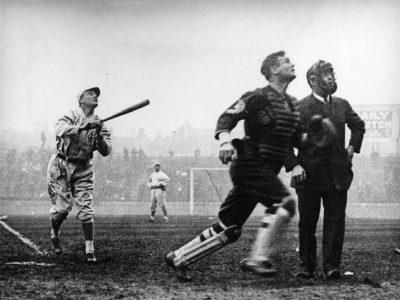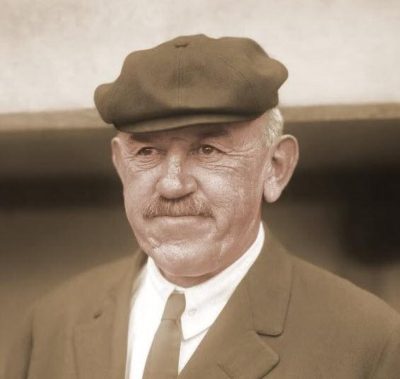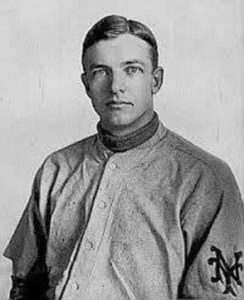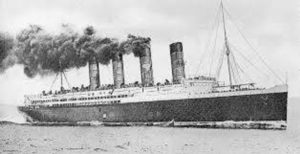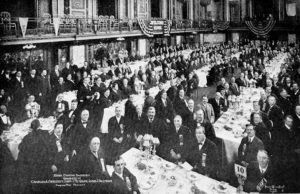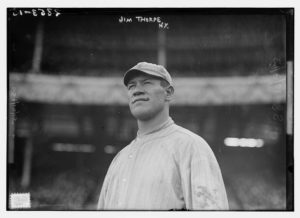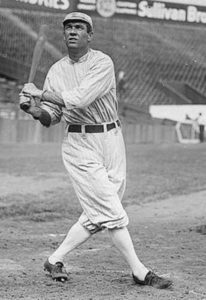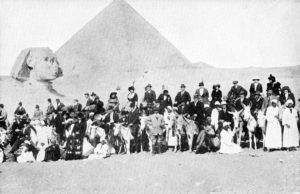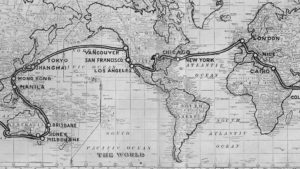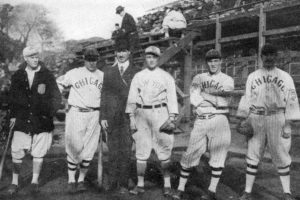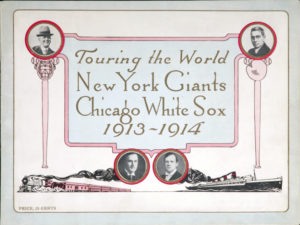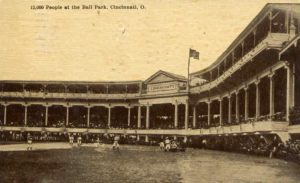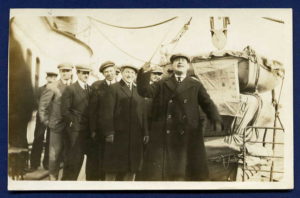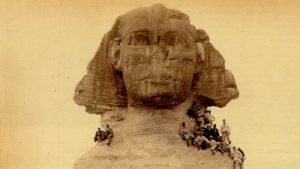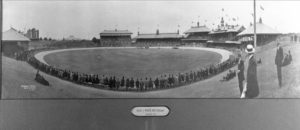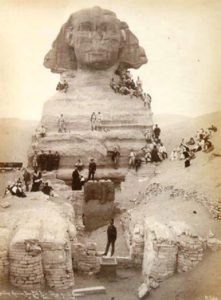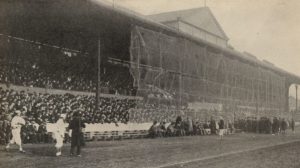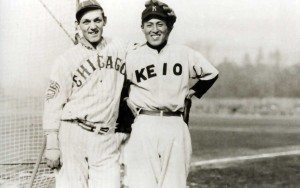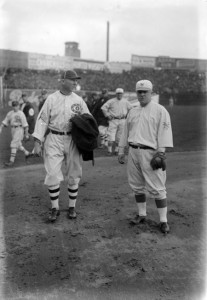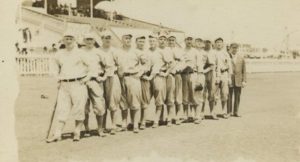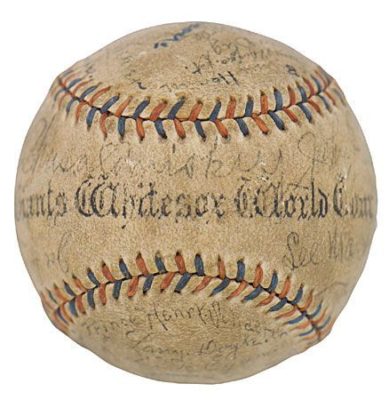Subscribe to Baseball History Comes Alive! for automatic updates (sign-up block found in right side-bar)
As a Free Bonus for subscribing, you’ll get instant access to my two Special Reports: Memorable World Series Moments and Gary’s Handy Dandy World Series Reference Guide!
1913-’14 World Tour Photo Gallery
Click on any image below to see photos in full size and to start Photo Gallery:
Shootings, Murders, Near-Tragedies, Part V:
1913-14 World Tour
Near Disaster Strikes – Twice!
As I conclude my series on baseball shootings, murders, and near-tragedies, I thought it would be appropriate to turn the spotlight once again on the 1913-14 World Tour, billed as “The Tour To End All Tours.” I’ve written about the tour before, so I hope our readers don’t mind if I highlight it one more time, since it fits in so well with the theme of the series. As far as “near-tragedies” go, this one takes the cake by far. In an ironic way, the “end” almost came true.
The 1913-’14 World Tour was organized by John McGraw and Charles Comiskey one night in December 1913, after the two were having a few drinks at “Smiley” Mike Corbett’s bar on Chicago’s East Side. I’ll bet not many of you are aware that the entire entourage was almost wiped out…not once, but twice.
First, a little recap about the trip. Sixty-seven people went on the overseas part of the tour, including 24 ballplayers, two umpires, assorted wives, children, in-laws, reporters, a priest, medical personnel, White Sox front office personnel, and various Comiskey cronies and drinking buddies. McGraw and Comiskey filled their rosters with current Giants and White Sox players and then added a few famous and more colorful names like Jim Thorpe.
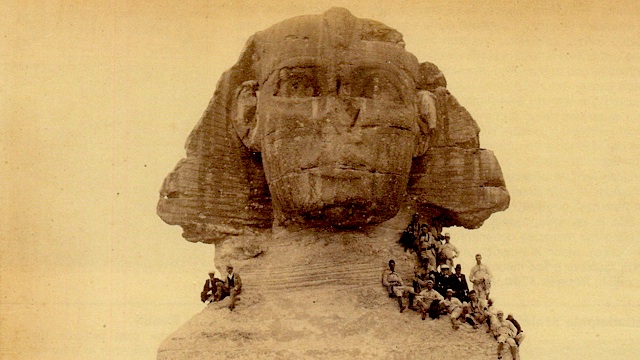
In the featured photo above, we see part of the White Sox World Tour team (Complete player identifications available upon request).
The tour began as a barnstorming trek across the country a week after the 1913 World Series. Upon reaching the West Coast, the entourage boarded the luxury liner, R.M.S. Empress of Japan on November 19 to take them across the Pacific for the overseas portion of the tour. The tour’s first stop on foreign soil would be in Tokyo and, going from east to west, the last one would be in London. In between the travelers would touch down in Hong Kong, China, the Philippines, Australia, Egypt, Ceylon, France, Italy, and the Vatican, and other countries that could come up with at least a rudimentary ball field.
The First Near Disaster: A Massive Typhoon Hits While Crossing the Pacific
About a day after lifting anchor in Victoria, Canada, the liner encountered rough seas which immediately rendered almost all the passengers with severe sea-sickness (as a former Navy officer myself, I know how debilitating this can be). But much worse was yet to come. Here’s a gripping account from Jim Elfers book, The Tour to End All Tours which gives the best sense of the terror and dread experienced aboard the Empress of Japan:
“On the morning of November 29, the bad weather they were experiencing turned positively nightmarish, as a late-season typhoon ripped open the heavens. The storm, easily the worse the Northern Pacific had seen in at least twenty years, turned the seas into a hellish cauldron. Winds of hurricane force, heavy snow, and mountainous seas battered the Empress. By four o’clock in the morning, the ship’s first officer declared an emergency.”
“The darkness was so absolute and the waves so high that neither he nor anyone else on board could guess which way the ship was headed. So loudly did the waves batter the Empress that it sounded like artillery. Three boat booms were snapped and a lifeboat was shattered by the force of the waves. One mammoth wave slammed into the bridge, nearly tearing it from the ship.”
“For 16 harrowing, terrifying hours, the vessel was in severe distress, and in serious danger of capsizing, being tossed about the ocean like a cork amid 60-foot waves. The Empress began shipping water both fore and aft. Water streamed into its coal bunkers, while below deck, the stokers, in water up to their knees, worked feverishly to keep the turbines humming. The ship was blown over 200 miles off course. The captain nearly gave the order to abandon ship. Had he done so, it is certain that all aboard would have perished at sea. Fortunately for all, they survived the harrowing ordeal as the storm blew itself out on December 1.”
The Second Near Disaster: On the Train to Rome:
The entourage had another close encounter with disaster while on their train chugging along at full speed towards Rome. The incident occurred as the train neared Rome’s Volturno River. It was again vividly detailed by Jim Elfers:
“A twenty-foot section of track spanning the river had been removed for repair. For reasons unknown, the engineer missed the signals warning him off the tracks. A phalanx of uniformed railroad workers blaring away on trumpets and gesticulating wildly materialized along the tracks. Workers who lacked trumpets screamed their lungs out, trying to get the engineer’s attention. They did get his attention – narrowly avoiding disaster – as he stopped the train on the brink the abyss, put it into reverse, and pulled onto a parallel track before heading north again.”
“The tourists shuddered as their train passed the detour point. Beneath the twenty-foot gaping maw of nothingness was a sixty-foot drop, a raging river, and hard, unforgiving rocks. Had the train not stopped in time there is no doubt that they all would have perished.”
I shudder to even think about this close call. It’s interesting to speculate on how the history of baseball would have changed had either of these two disasters not been averted. Baseball would have lost personalities like John McGraw, Charles Comiskey, Tris Speaker, Sam Crawford, and Buck Weaver among many other star players. Thankfully, all returned home safely, none the worse for wear, and the tour was considered by all involved to be highly successful.
Gary Livacari
Photo Credits: All from Google search
Information: Quotes edited from Jim Elfer’s book, The Tour to End All Tours
Check out my latest book, recently nominated for the SABR 2020 Lawrence Ritter award: Reflections On the 1919 Black Sox: Time to Take Another Look now available on Amazon in e-book and paperback. All profits go to the Illinois Veterans Foundation
Vote In Our New Poll: How Do You Feel About New Rules Changes?https://wp.me/p7a04E-7Ov
We are a participant in the Amazon Services LLC Associates Program, an affiliate advertising program designed to provide a means for us to earn fees by linking to Amazon.com and affiliated sites. Click here to view Amazon’s privacy policy
